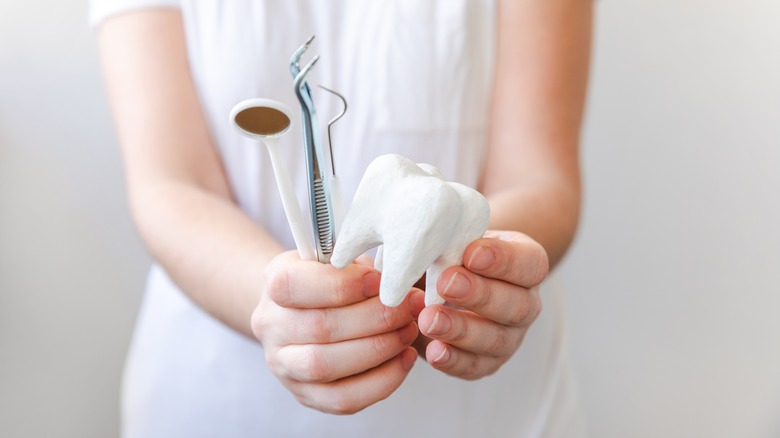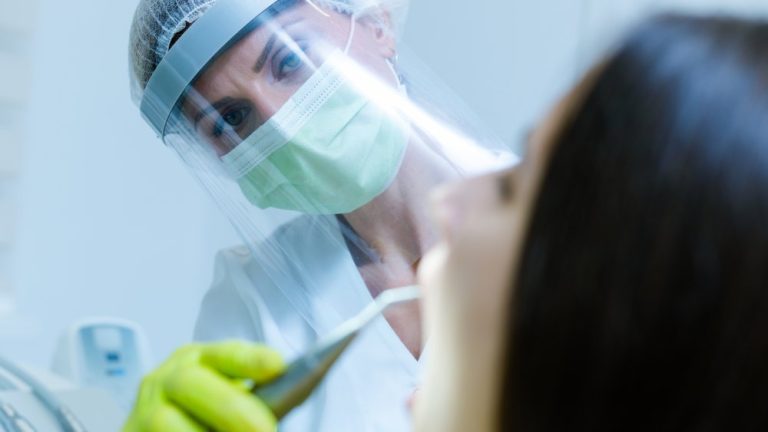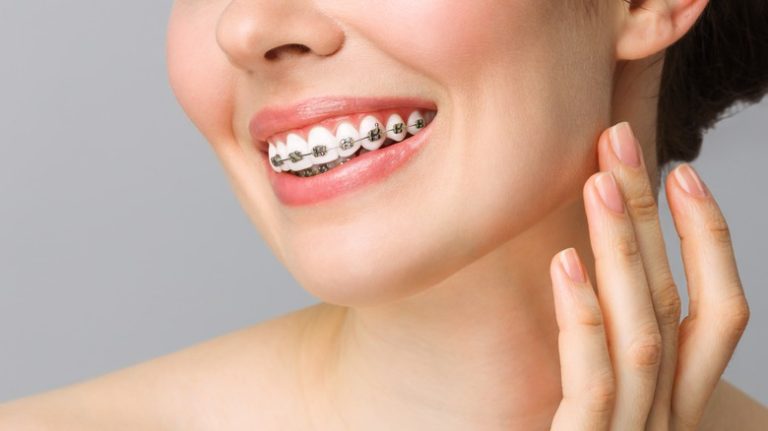Many people take their teeth for granted. We go to the dentist twice a year for cleaning (if we remember), brush our teeth twice a day (mostly), and only sometimes floss. Many people don’t even know the names of the type of teeth or what they do. Teeth not only play a role in one’s appearance and help us chew our food, but they also help us speak properly and play a role in our overall health, according to Everyday Health.
Without our teeth, it is safe to say that life would be much more difficult. Now is the perfect time to learn everything you can about your teeth and take back control of your oral health. For example, did you know that, in addition to there being multiple types of teeth, even individual teeth have multiple layers?
Let us explain everything about the different types of teeth and what they are made of.
The tooth consists of four parts

Each tooth is made up of four parts, with each having different functions. The outermost part of the tooth, the enamel, is also the hardest. Mostly made of calcium phosphate, the enamel is rock hard, according to WebMD. When dentists say you have a cavity, a hole has developed in the enamel. This can be caused by bacteria, sugary foods and drinks, or not brushing your teeth enough, explains Mayo Clinic.
One layer down, the dentin is a softer material that covers the pulp and root of the tooth, explains DentalCare.com. If a cavity gets through the enamel, it usually quickly progresses through the dentin since it is much softer.
Even softer than dentin, the cementum is a thin layer of dental tissue that covers the roots of the teeth. As layers of cementum age, new layers form to keep the root structure intact, according to ScienceDirect. Interestingly, scientists don’t know for a fact how the cementum stays attached to the dentin, but we do know it’s a very durable connection.
The pulp is found at the center of the tooth. It is a soft tissue that is primarily made of nerve tissue and blood vessels to help keep the tooth alive and healthy, according to Colgate.
Incisors help you take bites of your food
Incisors are the teeth that get the most attention because they are the most visible. Incisors are the eight front-most teeth in your mouth, four on the top and four on the bottom, according to Everyday Health. It may seem like the only use of incisors is to look good, especially when 4.5 million Americans have braces, according to Meridian Orthodontics. However, incisors are just as important as other teeth.
When you take a bite of food, you use your incisors first. Also, the incisors are important in speaking by helping to pronounce words. It is more difficult to speak when there is a misalignment of the teeth. This can be helped with orthodontics, according to Sydney Speech Clinic.
Incisors usually begin to erupt at six months of age, and then the adult set will begin to push in between the ages of six and eight years old (via Everyday Health).
Canines are your sharpest teeth
Cast Of Thousands/Shutterstock
Next to the eight incisors, the canines are the four, sharp teeth on the top and bottom of the mouth. They are called canines because they look like teeth a dog might have. They help with biting and tearing our food, especially food that would be difficult to eat without canines, like meat or bread, according to Vineyard Hills Dental Care.
Just like incisors, canines help with speech and help to close your mouth. Since the canines are usually the first teeth to touch when you close your mouth, they help guide the mouth closed, explains Denver Youth Dentistry.
Your canines erupt a little bit later than your incisors. Your first set of canines grow between 16 and 20 months, the uppers before the lowers, and your permanent canines between the ages of 9 and 12 in the reverse order, lowers then uppers, according to Everyday Health.
Premolars are used for chewing food
Monkey Business Images/Shutterstock
The premolars, like other teeth, are used for chewing and grinding food. They are also called the bicuspids. On each side of the mouth sits four premolars, two on the upper jaw and two on the lower jaw, according to Everyday Health. They are considered transitional teeth, having features of both molars and canines. After grinding food, they help to push the food into the back of the mouth where the molars do most of the breaking down of the food before digestion, explains Colgate.
Unlike incisors and canines that have primary teeth that appear as a toddler and then get replaced as a child, premolars have no primary version. Instead, the first premolars will start to grow around 10 years old and the second premolars come in roughly a year later (via Everyday Health). These premolars will push out the primary molars that grew in that area. Speaking of molars…
Molars are also used for grinding food
JN 999/Shutterstock
Molars are the teeth in the back of your mouth, according to Everyday Health. The primary set of molars pushes in between 12 and 28 months old, with some eventually being replaced by the premolars. The first permanent molars come in at roughly 6 years old and the second permanent molars erupt between 11 and 13 (via Everyday Health).
There are also third molars, also known as wisdom teeth, which don’t erupt until the person is almost fully grown, between 17 and 21 years old. Scientists believe that wisdom teeth are remnants of an evolutionary change, when human mouths were bigger and could hold more teeth, explains Verywell Health.
It may sound like premolars and molars are the same tooth, just with different names. They are very similar, but they have distinct differences. The size and shape are the primary differentiators, with molars having four points while premolars have two or three. Molars are also larger than premolars. Finally, the crevices on top of the molars are deeper than those found on premolars, according to Colgate.


